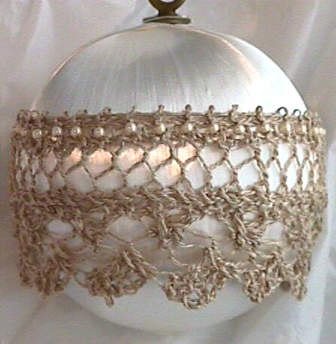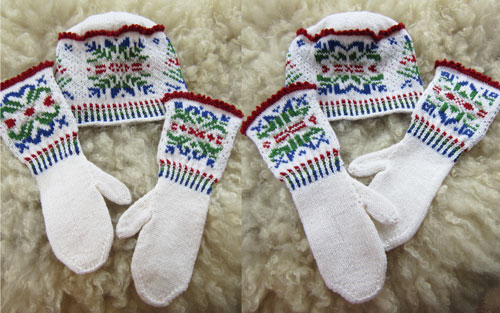People sometimes ask what my favorite cast on is. Out of all the many cast on methods I know and sometimes use (and would specify in my HeartStrings patterns if I used something special), the Long Tail Cast On is my work horse – i.e. the default cast on I use unless there is a reason to use something else.
If you need a refresher about what the Long Tail Cast On is, or how it is done, here is a tutorial at KnitPicks.
Since the premise of Long Tail Cast On is to leave a yarn tail long enough to cast on all the stitches you want, a good skill to know is how much tail to leave. Especially if needing to cast on a LOT of stitches, it is quite frustrating to have to join in another length of yarn (and therefore have 2 extra yarn ends to weave in later). The other end of the spectrum is to leave way too much, and that can potentially be wasteful especially with high-priced yarn. So, like Goldilocks and the Three Bears, the “porridge that is just right” is starting out with a tail that is long enough to complete casting on all stitches plus some extra for weaving in later.
A Rule of Thumb for Standard Gauges
The relatively well-known rule of thumb is to leave a tail that is 3 times the width of the knitting plus a few inches to secure into the knitting later by weaving in.
This works pretty well when you are knitting standard fabric gauges such as for sweaters. But can start getting off when the gauge is firmer (e.g. socks) or looser (e.g. lace shawls).
Another big consideration in socks and lace is that a supple and loose cast on is required for optimum expansion (e.g. the top of sock cuffs, or when blocking lace). So this rule of thumb might give you a too short estimate. Maybe, maybe not, but I want to offer another calculation that is almost as easy, and that at least you can consider so that maybe you won’t be frustrated by a too-short long tail after getting almost to the end of casting on a zillion stitches.
An Observation
One way that many knitters try to rectify the problem of a too-tight beginning edge is to cast on over two needles, or cast on using a larger needle. You can get by with this method, as long as the yarn used will re-distribute itself into spaces between the stitches when stretched row-wise. Otherwise, you will just get a sloppy extra-high first row of stitches, with a still too-tight cast on.
And it hardly will ever work with Long Tail Cast On, because even if the ball-end yarn loops will re-distribute and stretch out, the long tail end is already elongated along the bottom edge and constrains the widthwise stretch.
A commonly overlooked fact is that the distance between the stitches of the cast-on row is a big determinant in whether there is enough looseness in the cast on edge to stretch similarly to the rest of the knitting. Of course, you don’t want your cast on edge to be so widely spaced that it is sloppy looking either. A good test is that you should be able to fully insert a knitting needle of the same size between any two cast on stitches. If you keep this is mind, you will soon get to the point of automatically “knowing” to leave enough distance between each cast on stitch. Please don’t tell me it is impossible to use the easy work-horse Long Tail Cast On for lace — I’ve been successfully doing it or decades and want to help you learn to love it, too (if you want to).
An Easy Long Tail Calculation Based on Number of Stitches and Needle Size
Now back to knowing how much of a long tail to leave for casting on. (this of course assumes standard practice of working the long tail with your thumb for the closed edge loops of the cast on, and the ball-end of the yarn is being worked over your forefinger for the stitches that are placed on the knitting needle)
Long tail length (in inches based on mm needle size):
[ (Number of stitches) * (mm needle size) / 8 ] + some extra for weaving in later
For example, the Peek-a-Bead Scarf is 43 stitches on US 6 / 4 mm needles, so the calculation is [43 * 4 / 8] = 21.5″ + some extra for weaving in later
Note: For those using metric, convert by a factor of 2.54 cm per inch; i.e. 2.54 * 21.5 = 54.5 cm for the above example.
What’s Behind All This?
It’s that amazing thing called PI, a mathematical wonder. PI times the diameter of a needle is the circumference around which the yarn travels. So I’ve used that trajectory of the yarn’s path, simplified a bit for ease of use (but still should be plenty accurate enough), and voilà — a way you can calculate your long tail yarn length based on number of stitches and needle size.


